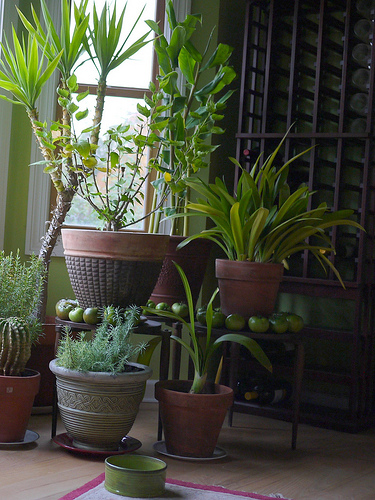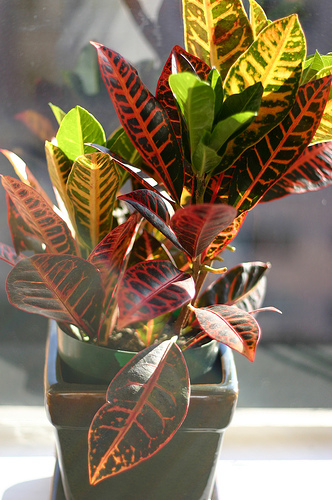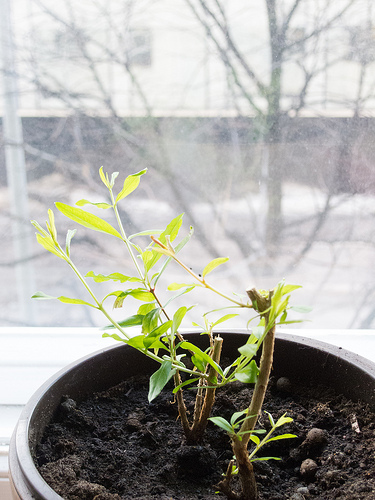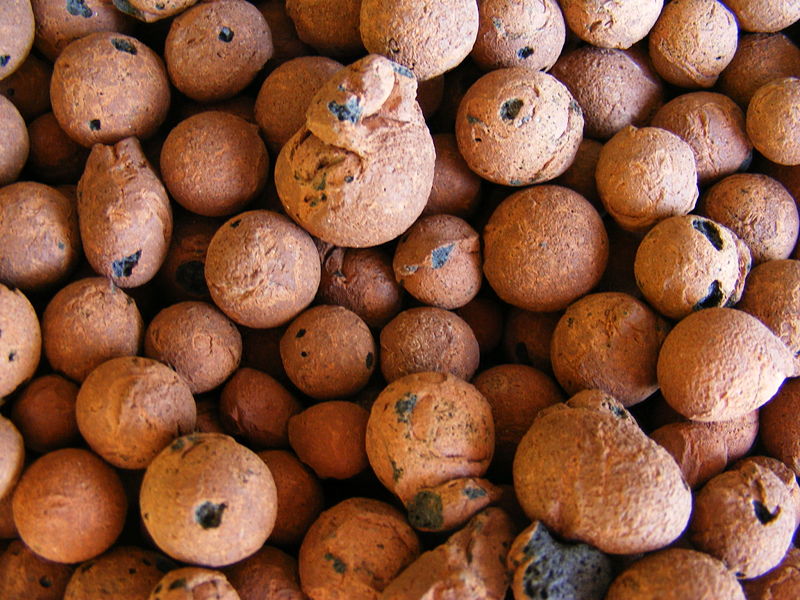By Leslie Harper
While houseplants add an attractive design element to your home decor, they also reduce ozone, the main component of air pollution, reports Science Daily. Even plants as common as the fast-growing Golden pathos help filter formaldehyde from the air. Arm yourself with the tools and know-how to keep your houseplants healthy and thriving—and they’ll do the same for you.
Containers
While many containers used for houseplants are decorative and add color, pizzazz and style to a room, if it isn’t plant friendly, your greenery won’t have a fighting chance. Look for containers with adequate drainage. Indoor plants potted in a container with no drainage holes eventually leads to root rot.

Photo by F. D. Richards via Flickr
Environment
Lighting plays an important role in plant health. Too much results in wilted, dull and yellow leaves while too little causes plants to sprawl out versus growing in a tight and uniform manner. To help plants grow and thrive year-round, use woven wood shades in your home to regulate seasonal lighting.

Photo by robin.elaine via Flickr
Fall and Winter Checklist
During the spring and summer, indoor houseplants generally thrive when properly maintained with water, food, adequate lighting, proper temperatures and a properly draining container. During the cooler months, these steps will help plants make it through the season when their growing cycle slows down.
- Cut back on the number of times you water
- Mist plants one to three times a day to provide moisture
- Water with tepid versus cold water
- Remove dust build-up from stems and leaves
- Avoid repotting and fertilizing plants
- Provide plenty of light
- Move plants away from heat vents and fireplaces

Photo by Petteri Sulonen via Flickr
Tools
Since watering is a vital step for houseplants, keeping them quenched throughout the day, a weekend or longer with the use of self-watering items. Watering globes are designed to keep roots moist as the soil dries out. Another option, clay pebbles help absorb water, expand, then disperse the water slowly.

Photo of clay pebbles via Wikimedia Commons
When using self-watering products, it’s important to know the type of soil used in the container. Some soil mixes tend to dry out faster than others and if you’re planning to use a watering globe while you’re away on vacation, you don’t want the globe running out of water on the second day.
For plants that tend to need a drink daily, watering globes provide the much-needed refreshment and hydration. Today’s Homeowner recommends making a hole in the soil with a pencil before inserting the globe to avoid soil from blocking the opening.
Nutrients
Plants need a well-balanced diet of nutrient-rich soil to keep root systems strong and healthy. Now that your houseplants are nestled comfortably in a container with a watering system in place in a cozy, well-lit environment, a tasty menu of potassium, phosphorus and nitrogen should be on the menu. Choose the appropriate mixture, such as 10-10-10, for your plant to entice growth during the growing season.
Leslie Harper
Vegan, gardener, blogger






